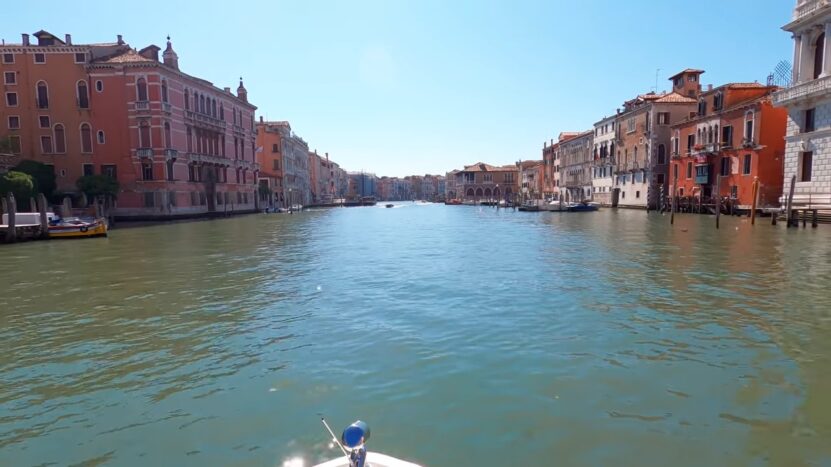The Grand Canal is one of the best ways to see the beautiful city of Venice, Italy. The Grand Canal is one of the most widely traveled waterways in Europe as well as the most popular Venice, Italy attractions.
Here, we have compiled a list of the seven most interesting Grand Canal Venice facts. Many of the lovely hotels in Venice, Italy offer magnificent views of the Grand Canal.
The Magnificent Grand Canal of Venice
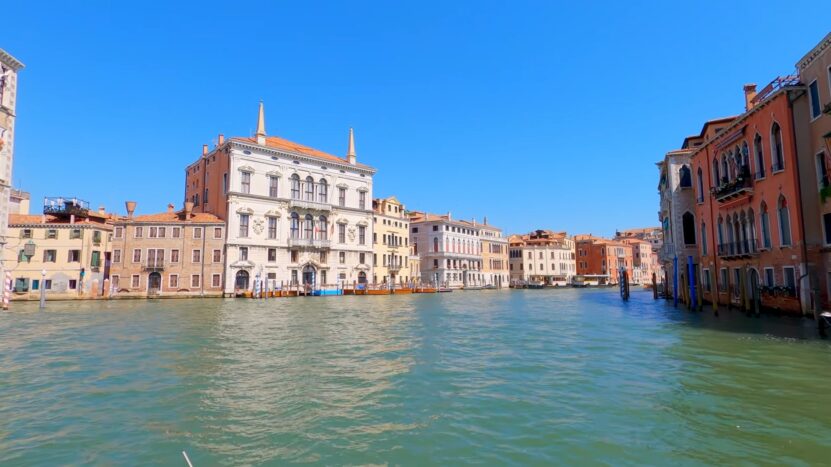
The Grand Canal of Venice, often hailed as one of the largest and most significant canals worldwide, stretches approximately two and a half miles long. This remarkable waterway, a hallmark of Venetian urban planning and architecture, carves its serpentine path through the heart of the city, providing a unique blend of functionality and aesthetic appeal.
The canal, remarkably, plunges to a depth of sixteen feet, a design essential for accommodating the vast array of vessels that traverse its waters daily. From gondolas, the traditional Venetian rowing boats, to vaporettos, the public water buses, and private water taxis, the canal’s depth plays a pivotal role in enabling the city’s unique mode of transportation.
A striking feature of the Grand Canal is its varying width, which spans from ninety to three hundred feet across at different points. This wide range of width not only adds to the canal’s visual allure but also facilitates efficient navigation and traffic management along this bustling aquatic artery of Venice.
Regarded as a centerpiece of the city, the Grand Canal carries immense importance in Venice’s socio-economic life. It is lined with more than 170 majestic buildings, most of which date from the 13th to the 18th century, that display the prosperity and artistic talent of the Republic of Venice. The grandeur of these historic structures, reflected in the canal’s shimmering waters, offers a timeless spectacle to both residents and visitors.
Architectural Grandeur along the Grand Canal: A Historical Journey
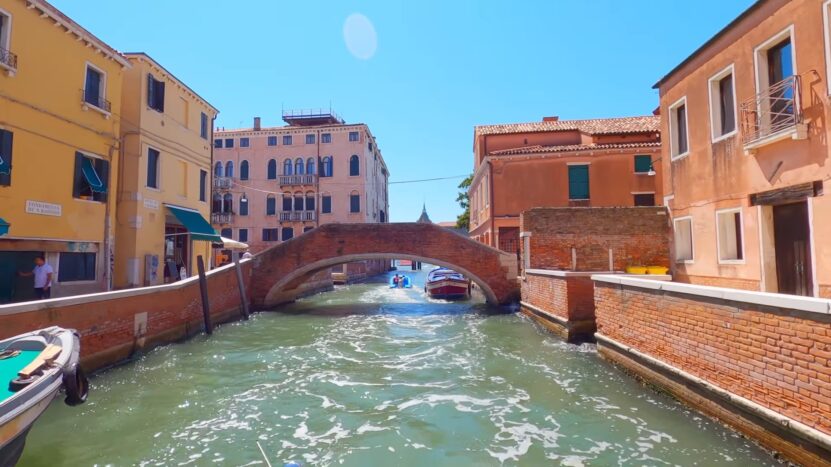
The Grand Canal of Venice is renowned not only for its intrinsic geographical features but also for the rich array of architectural gems that flank its edges. Boasting over 170 buildings, the canal serves as an open-air museum, displaying centuries of Venetian architectural evolution. These structures, predominantly constructed between the 13th and 18th centuries, stand as enduring symbols of the city’s affluent past and artistic prowess.
Strolling along the canal is like embarking on a historical journey, with each building narrating a unique chapter of Venice’s rich architectural history. The edifices, whose foundations are immersed in the waters of the canal, are a testament to the innovative construction methods employed by the Venetians to adapt to their unique watery environment.
The buildings along the Grand Canal are predominantly grand palaces and mansions that once belonged to the Venetian nobility. These structures, designed by the city’s master architects, showcase a range of architectural styles, from Byzantine and Gothic to Renaissance and Baroque. Each building is a masterpiece in its own right, contributing to the distinctive aesthetic appeal of the canal.
Nerve Center of 10th Century Trade
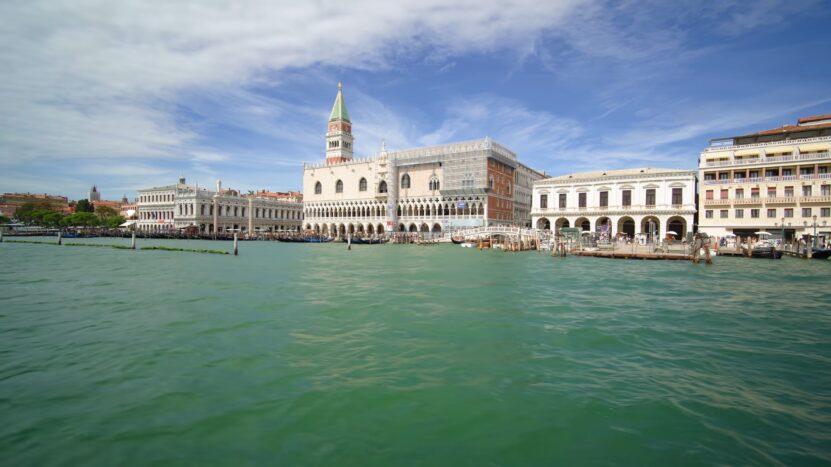
The Grand Canal in Venice, during the 10th century, was not just a picturesque body of water, but a bustling hub for trade and commerce. Its unique geographic location, coupled with Venice’s strategic position in the Mediterranean, transformed the Grand Canal into a pivotal center for the shipping trade.
Venice, during this era, was rapidly evolving into a maritime powerhouse, with its flourishing trade networks extending across the Mediterranean and beyond. At the heart of this trading empire was the Grand Canal. Its winding, navigable waterway, laden with vessels of all sizes, was a testament to the city’s burgeoning economic activity.
As the central artery of Venice, the Grand Canal was teeming with ships, gondolas, and merchant vessels, laden with goods from distant lands. Merchants from across Europe, the Middle East, and even Asia flocked to the canal’s waters, eager to engage in profitable trade deals. The canal was a bustling marketplace, with goods ranging from exotic spices and luxurious silks to precious metals and intricate artworks changing hands.
The Ancient Riverbed: Tracing Historic Path
The Grand Canal of Venice, with its timeless beauty and importance, is believed to have been shaped by more than just human hands. It is thought to follow the route of an ancient river that once flowed through the region. This theory not only adds another layer of historical depth to the canal but also links it to the natural evolution of the Venetian landscape.
The city of Venice is an archipelago of 118 small islands, formed over centuries by the sedimentation of numerous rivers flowing into the Adriatic Sea. Over time, these river sediments accumulated and formed a marshy lagoon, crisscrossed by meandering waterways. The city of Venice, as we know it today, was built on these islands and waterways.
Among these waterways, the most prominent is the Grand Canal, which cuts through the heart of the city. The canal’s S-shaped course suggests that it might have followed the path of an ancient river, a vestige of the region’s geologic past.
This ancient river, now lost to time, would have been a significant watercourse, carving its path through the terrain and creating a natural waterway. As the river flowed, it would have deposited sediments along its banks, contributing to the formation of the islands of Venice.
Celebrating Tradition on the Water: The Historic Regatta
Among the myriad of cultural and historical attractions that Venice has to offer, the Grand Canal comes to life in a unique spectacle every year. On the first Sunday in September, it hosts the Rigata Storica, a historic boat race that has been an integral part of Venetian tradition since the 14th century. Witnessing this event unfold is an unmissable experience for anyone visiting Venice.
The Rigata Storica is not just a race; it’s a celebration of Venice’s rich maritime history. The event is a nod to the city’s past, a time when Venice was a major maritime power, and boat races were a regular part of life. These races were once held to commemorate victories at sea or to entertain visiting dignitaries. Today, they continue in the same spirit, paying homage to the city’s seafaring legacy while adding a dash of vibrancy and excitement to the Venetian calendar.
As the event unfolds, the Grand Canal transforms into a stage for a spectacle that captures the essence of Venice’s past and present. The race is preceded by a grand parade featuring ornately decorated boats and participants dressed in period costumes. This parade sets the stage for the main event, creating a vivid tableau that transports spectators back to the city’s golden age.
The Singular Giant Amongst Many: The Grand Canal in the City of Canals
Venice, often referred to as the ‘City of Canals’, is a unique urban landscape. Composed of numerous islands interwoven by a network of smaller canals, this city presents an intriguing blend of history, culture, and architecture. But amid this intricate maze of waterways, there is one that stands out for its size and importance – the Grand Canal of Venice.
In a city that boasts hundreds of canals, the Grand Canal distinguishes itself as the only large one. Stretching approximately two and a half miles in length, it cuts a sweeping curve through the heart of Venice. It is not just its size that sets it apart, but also its depth of about sixteen feet and its impressive width, which ranges from ninety to three hundred feet. This grand waterway is Venice’s aquatic thoroughfare, its pulsating artery that connects various parts of the city.
While the smaller canals have their own charm, offering intimate glimpses into the city’s daily life, it is the Grand Canal that commands attention. It is the principal route for public transportation, with vaporettos (water buses) and gondolas ferrying locals and tourists alike. It is also the primary route for commercial transport, with cargo-laden boats navigating its waters, reminiscent of the city’s past when it was a bustling maritime republic.
Vibrant Venetian Waterway
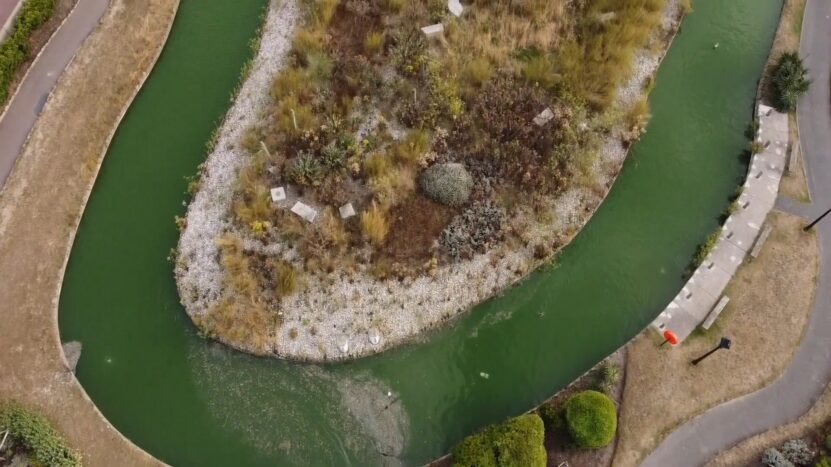
In Venice, a city famed for its aquatic architecture, the Grand Canal stands as the central vein of transportation. Unlike any other city, where roads and subways form the major traffic arteries, in Venice, the waterways are the primary routes for movement, and none more so than the Grand Canal.
The Grand Canal acts as the bustling main street of this unique city, facilitating the majority of Venice’s traffic. It’s a lively aquatic boulevard, buzzing with activity from dawn to dusk and even into the late hours. On its waters, a diverse assortment of vessels can be observed, each with its own unique purpose.
The vaporettos, or water buses, are perhaps the most common sight. These public transportation boats shuttle Venetians and visitors alike from one stop to another, providing an efficient and scenic way to navigate the city. Similarly, private water taxis zoom across the canal, carrying passengers swiftly to their destinations.
If you enjoyed learning about interesting facts related to Venice’s Grand Canal, you might also be interested in discovering Buckingham Palace.
FAQ
1. Q: What is the best way to explore the Grand Canal in Venice?
A: There are several ways to explore the Grand Canal. The most iconic way is, of course, by a gondola ride. It’s the quintessential Venetian experience that provides a close-up view of the stunning architecture along the canal. You can hire a private gondola, usually piloted by a gondolier who can share interesting facts and stories about Venice.
Alternatively, you can also take a vaporetto, or water bus. Line 1 and Line 2 vaporettos ply the Grand Canal route from the Piazzale Roma to St Mark’s Square. It’s a cost-effective way to see the canal, especially if you’re on a budget. Lastly, for a more luxurious experience, you can hire a private water taxi or even take part in a guided canal tour.
2. Q: What are some notable buildings along the Grand Canal?
A: The Grand Canal is flanked by numerous buildings that exhibit various architectural styles, from Byzantine and Gothic to Renaissance and Baroque. Some of the most notable ones include:
- The Ca’ d’Oro (Golden House), a stunning example of Venetian Gothic architecture.
- Palazzo Venier dei Leoni, which houses the Peggy Guggenheim Collection, one of the most important modern art museums in Italy.
- The Rialto Bridge, one of the most famous and iconic bridges in Venice.
- Palazzo Dario, a Venetian palace renowned for its elegant facades.
- The Basilica di Santa Maria della Salute, a stunning Baroque church that stands at the entrance to the Grand Canal.
3. Q: What is the Rigata Storica?
A: The Rigata Storica is a traditional rowing race that takes place on the first Sunday of September every year on the Grand Canal. It’s one of the most popular events in Venice and has been held since the 14th century. The event includes a parade featuring ornately decorated boats and participants dressed in period costumes, followed by the actual race. There are four categories in the race: the children’s twin-oared pupparini, women’s twin-oared mascarete, six-oared caorline, and the most anticipated race between the men’s twin-oared gondolini.
4. Q: How was the Grand Canal formed?
A: The exact formation of the Grand Canal is not known, but it is believed to have followed the course of an ancient river. Venice is built on 118 small islands in a lagoon in the Adriatic Sea. Over centuries, sedimentation from numerous rivers flowing into the Adriatic formed these islands and the waterways that crisscross the city. The Grand Canal, the largest of these waterways, likely followed the path of one of these ancient rivers.
5. Q: How does the Grand Canal contribute to transportation in Venice?
A: The Grand Canal is the major aquatic thoroughfare in Venice, akin to a main road in any other city. Public transportation in the form of vaporettos (water buses) is the most common means of travel along the canal, ferrying both locals and tourists to different parts of the city. Private water taxis also ply the canal, offering a quicker, albeit more expensive, means of travel. For tourists, gondolas offer a more leisurely and romantic way to navigate the canal. In addition, goods are often transported along the canal, mirroring the canal’s historic role as a crucial trade route.
Conclusion
As I draw this journey through the romantic landscapes of Italy to a close, I can’t help but reflect on the unique charm of Venice. Whether it’s a honeymoon or simply a romantic escape, Italy, with its deep-rooted history, delectable cuisine, and vibrant culture, has always been a cherished destination for couples. Yet, the city that leaves an indelible mark on every visitor’s heart is undoubtedly Venice.
Venice, fondly known as ‘The City of Water,’ stands as a testament to human ingenuity. Constructed on over 100 tiny islands in an Adriatic lagoon, this city is a world apart. In place of roads, it boasts a network of canals, the most famous of which is the Grand Canal. This unique configuration of the city paves the way for an intimate, almost dreamlike atmosphere, making it an ideal setting for couples seeking a romantic getaway.
In my time exploring Venice, I’ve found that the city’s allure lies not just in its picturesque canals and historic landmarks, but also in its intrinsic romantic aura. From the enchanting gondola rides along the Grand Canal to the quiet, cobblestone alleys that seem to whisper stories of centuries past, Venice has a way of making you fall in love, not just with the city itself, but also with the person you’re experiencing it with.

